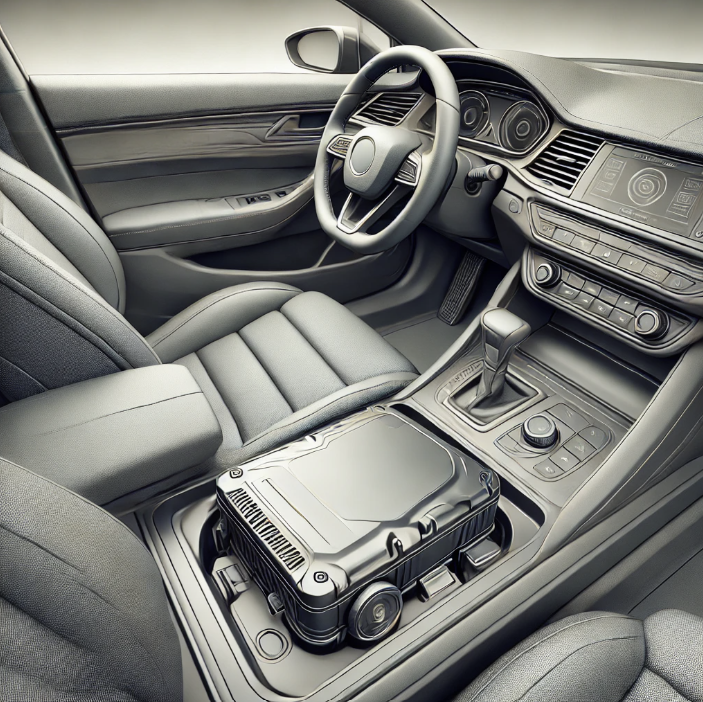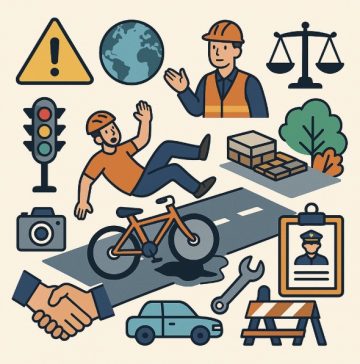The Event Data Recorder: A Black Box in Your Car to Enhance Road Safety
Since July 6, 2022, the Event Data Recorder (EDR), a technology often compared to the black box in airplanes, has been mandatory for all newly homologated vehicles within the European Union. This requirement has been fully implemented since July 2024, meaning that all new vehicles sold in the EU are now required to be equipped with an EDR. The goal? To improve road safety by recording crucial data during accidents. This article explores this device, its legal implications, and the privacy issues it raises.
What is an Event Data Recorder (EDR)?
The Event Data Recorder is an electronic device designed to record and store data from a vehicle during an accident. It looks like a small device, often compared to a hard drive, and is placed inside the vehicle, typically under the seat or in the center console. Unlike what is often believed, the EDR does not record video or audio from the interior; it only captures technical data related to the accident.
A Technology Not So New
Although the EDR is often presented as a new technology, it has existed for over 10 years in the United States. Many vehicles sold today in Europe are already equipped with such a device. The introduction of this requirement within the European Union is therefore the final step in a global trend aimed at improving the safety of drivers and passengers while facilitating accident analysis.
What Data is Recorded?
The Event Data Recorder is triggered in the event of a collision and records crucial data from the 30 seconds leading up to the impact and the 10 seconds following it. This information includes:
- The speed of the vehicle at the time of the accident.
- The braking force applied before the impact.
- The deployment of the airbags, to understand if the safety system functioned correctly.
- The status of the safety systems, such as seat belts.
- The pressure on the pedals and the steering angle, which help understand the driver’s behavior during the accident.
These data can be crucial in a judicial investigation to determine the cause of the accident.
What Data is Not Recorded?
It is important to emphasize that the EDR does not function the same way as an airplane’s black box. Unlike aviation, the Event Data Recorder does not capture personal data such as:
- Conversations in the cabin (the EDR does not have a microphone to record sounds).
- Information about the vehicle’s brand or chassis number.
- Location data and the vehicle’s geographic position at the time of the accident.
- The date and time of the trips.
Therefore, contrary to popular belief, the EDR does not pose a threat to the driver’s privacy, as the data collected is anonymized and does not allow tracking of the vehicle’s movements.
The Impact on Privacy Protection
One of the main points of debate surrounding the Event Data Recorder is the question of privacy protection. However, safeguards have been put in place to prevent these devices from being used for purposes other than judicial investigations. In fact:
- The data is anonymized, meaning it is not linked to the driver’s identity.
- The EDR does not transmit any data in real-time, unlike other connected systems.
- The collected information is only used in the context of judicial investigations aimed at analyzing the causes of accidents, and only judicial authorities can access this data.
The data recorded by the EDR is never shared with insurance companies or used for commercial purposes, such as targeted advertising. This ensures that the driver’s privacy is protected while allowing the competent authorities to have the necessary evidence to clarify the circumstances of an accident.
Who Has Access to the EDR Data?
Access to the data recorded by the EDR is strictly regulated. In the event of an accident, only judicial authorities may request access to the data to reconstruct the events leading up to the collision. The information will be used exclusively to determine the cause of the accident and for no other purpose. This data is never transmitted to insurance companies or used by third parties for commercial purposes.
The Legal Implications of the EDR
As a lawyer specializing in traffic law, it is important to understand the legal implications of the introduction of the Event Data Recorder. This device could prove to be crucial in determining liability in a traffic accident. The data collected by the EDR can help support investigations, especially in judicial procedures aimed at establishing the driver’s responsibility. For example:
- If excessive speed or insufficient braking contributed to an accident, the EDR data can help prove these facts.
- In the event of a dispute about the accident by one of the parties, the EDR can provide objective data to resolve the issue.
In conclusion, the introduction of the Event Data Recorder in vehicles represents a major step forward in road safety. While this technology offers advantages in accident prevention and clarifying responsibilities, it also raises important privacy concerns, although safeguards have been put in place to ensure data confidentiality. Drivers must be aware of this development and understand its legal implications in the event of a dispute.
The EDR: A Useful Tool for Justice, but with Safeguards
The Event Data Recorder is therefore a device whose benefits, particularly in terms of road safety, are undeniable. However, its implementation must be accompanied by clear legal measures to protect the rights of drivers and ensure that the data collected is only used for legitimate purposes and with respect for privacy. If you have any questions, you can contact me.




